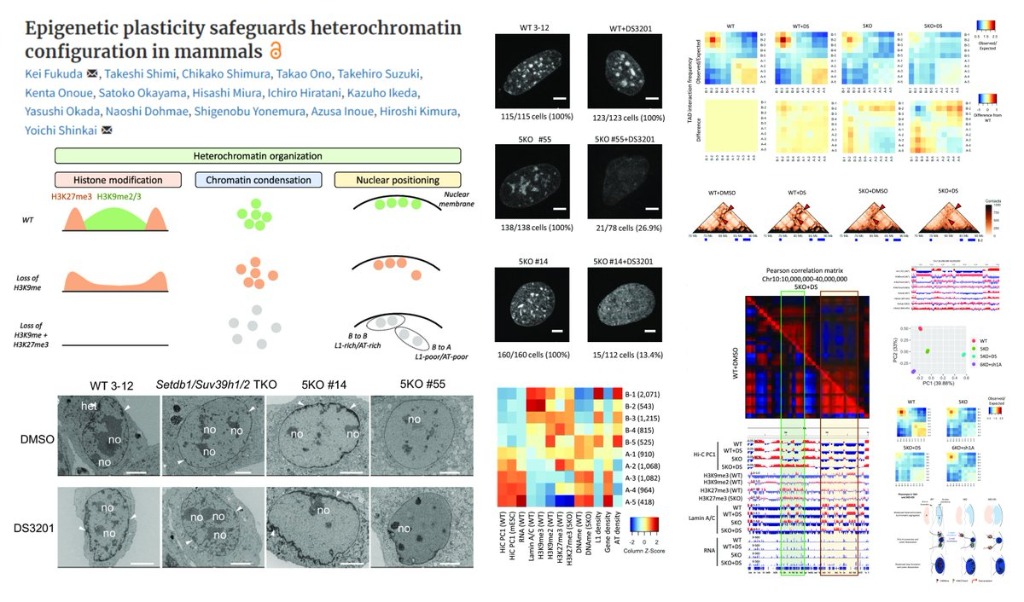Epigenetic Plasticity and Heterochromatin in Mammals
Epigenetic Plasticity and Heterochromatin Configuration in Mammals

Overview
This image provides a comprehensive view of how epigenetic plasticity safeguards heterochromatin configuration in mammalian cells. It seems to be from a scientific research article or presentation, illustrated with various data visualizations.
Key Concepts
Heterochromatin Organization
-
Histone Modification:
- Involves modifications like H3K27me3 and H3K9me2/3, crucial for maintaining heterochromatin structure.
- Thought: These modifications play a role in the compact state of chromatin, affecting gene expression and stability.
-
Chromatin Condensation:
- The packaging of DNA influences its accessibility and functionality.
- Additional Info: Chromatin condensation affects how genes are turned on/off by making parts of the genome more or less accessible to transcription machinery.
-
Nuclear Positioning:
- Refers to the arrangement of chromatin in the nucleus.
- Idea: Proper nuclear organization is essential for efficient cell functioning and biochemical regulation.
Experimental Data
Cell Analysis
- Cell Statistics:
- WT 3-12: 115/115 cells (100%)
- 5KO #55 + DS3201: 21/78 cells (26.9%)
- 5KO #14: 160/160 cells (100%)
- Thought: These metrics indicate the prevalence of certain heterochromatin configurations in different conditions or treatments.
Treatments
- DMSO and DS3201:
- These treatments show variations in heterochromatin organization across different samples.
- Insight: DS3201 significantly affects heterochromatin, as seen in decreased percentage of cells maintaining certain configurations.
Heatmaps and Correlation Matrices
- Heatmaps are used to show gene expression levels or chromatin states, comparing wild-type (WT) and various genetically altered samples.
- Pearson correlation matrices highlight the similarities or differences in heterochromatin configurations between treatments.
Data Interpretation
Categories & Scores
- Scores indicate distinct chromatin configurations:
- B-1 (2071), B-2 (543), A-1 (910), etc.
- The scores could represent specific chromatin states, with possible implications for gene expression.
Pearson Correlation Matrix
- Illustrates correlations between different experimental conditions, helping identify consistent patterns or anomalies.
Additional Thoughts
- The combination of metrics (percentages, heatmaps, scores) provides a multifaceted perspective on how genetic and epigenetic factors govern chromatin configuration.
- This research is pivotal in understanding gene regulation mechanisms, with potential applications in genetic therapy and understanding disease pathology.
Summary
This image portrays complex interactions between epigenetic modifications and chromatin structure in mammalian cells. The careful regulation of these factors ensures proper cellular function and genetic integrity, essential for normal development and disease prevention.
Extended readings:
pmc.ncbi.nlm.nih.gov
Epigenetic plasticity safeguards heterochromatin configuration in ...
pubmed.ncbi.nlm.nih.gov
Epigenetic plasticity safeguards heterochromatin configuration in ...
www.nature.com
Polycomb-lamina antagonism partitions heterochromatin at ... - Nature